
Augusta Ada King, Countess of Lovelace, also known as Ada Lovelace, was an English mathematician and writer chiefly known for her work on Charles Babbage's proposed mechanical general-purpose computer, the Analytical Engine. She was the first to recognise that the machine had applications beyond pure calculation.

The analytical engine was a proposed digital mechanical general-purpose computer designed by English mathematician and computer pioneer Charles Babbage. It was first described in 1837 as the successor to Babbage's Difference Engine, which was a design for a simpler mechanical calculator.

The Difference Engine (1990) is an alternative history novel by William Gibson and Bruce Sterling. It is widely regarded as a book that helped establish the genre conventions of steampunk.

Earl of Lovelace was a title in the Peerage of the United Kingdom. It was created in 1838 for William King-Noel, 8th Baron King, a title created in 1725.
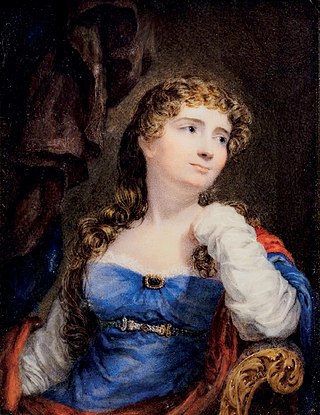
Anne Isabella Noel Byron, 11th Baroness Wentworth and Baroness Byron, nicknamed Annabella and commonly known as Lady Byron, was an educational reformer and philanthropist who established the first industrial school in England, and was an active abolitionist. She married the poet George Gordon Byron, more commonly known as Lord Byron, and separated from him after less than a year, keeping their daughter Ada Lovelace in her custody despite laws at the time giving fathers sole custody of children.
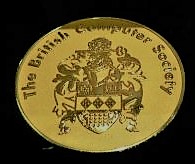
The Lovelace Medal was established by BCS, The Chartered Institute for IT in 1998, and is presented to individuals who have made outstanding contributions to the understanding or advancement of computing. It is the top award in computing in the UK. Awardees deliver the Lovelace Lecture.

Teknolust is a 2002 American film written, produced, and directed by Lynn Hershman Leeson who, at the time of production, was working in the art department at University of California, Davis. The film stars Tilda Swinton and Jeremy Davies.
Kathleen Beeler is an American cinematographer, best known for her work with Trinh T. Minh-ha and Lynn Hershman Leeson. She got her start working with Mike B. Anderson on Alone in the T-Shirt Zone, which she co-wrote, produced, was production designer, and acted in. She also shot Anderson's Kamillions and has done special effects photography for numerous higher-profile films. Beeler, along with Trinh T. Minh-ha, won the Excellence in Cinematography Award at the 1992 Sundance Film Festival for her work on the documentary Shoot for the Contents.
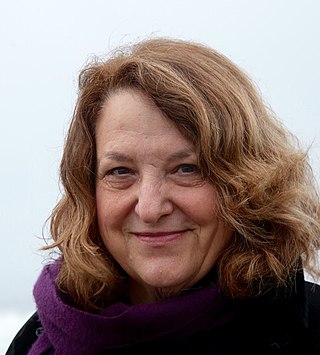
Lynn Hershman Leeson is an American multimedia artist and filmmaker. Her work with technology and in media-based practices is credited with helping to legitimize digital art forms. Her interests include feminism, race, surveillance, and artificial intelligence and identity theft through algorithms and data tracking.
Ada Byron Milbanke, 14th Baroness Wentworth was a British peer.

Hurlyburly is a 1998 independent comedy-drama film directed by Anthony Drazan and based on the 1984 play by David Rabe, who adapted the screenplay. The film is about the intersecting lives of several Hollywood players and wannabes. Rabe condensed the action of his three-hour plus play into two hours and updated the setting from the mid-1980s to the late 1990s.

Melina Sydney Padua is a graphic artist and animator based in the United Kingdom. She is the author of The Thrilling Adventures of Lovelace and Babbage steampunk comic, and her animation work appears in several popular Hollywood films.

!Women Art Revolution is a 2010 documentary film directed by Lynn Hershman Leeson and distributed by Zeitgeist Films. It tracks the feminist art movement over 40 years through interviews with artists, curators, critics, and historians.
The 14th Independent Spirit Awards, honoring the best in independent filmmaking for 1998, were announced on March 20, 1999. It was hosted by Queen Latifah.
Everything Relative is a 1996 American comedy-drama independent film written and directed by Sharon Pollack. It centers around a weekend reunion of seven women who were friends and political activists in college. The film has been compared to The Big Chill and Return of the Secaucus Seven in terms of theme and structure. It was presented at the 1996 Sundance Film Festival as part of the American Spectrum lineup.
Dorothy Josephine Del Bourgo Kellogg Stein was an American early computer programmer, psychologist, author and social activist. Her activities landed her on the cusp of or ahead of her time. She is best known for researching and writing the book Ada, which argued that Ada Lovelace was not the first computer programmer and did not have the mathematical ability to assist Charles Babbage as much as was believed.
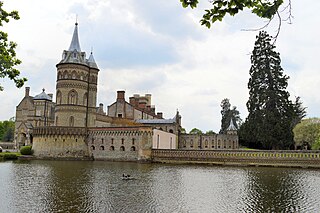
Horsley Towers, East Horsley, Surrey, England is a country house dating from the 19th century. The house was designed by Charles Barry for the banker William Currie. The East Horsley estate was later sold to William King-Noel, 1st Earl of Lovelace who undertook two major expansions of the house to his own designs. Lovelace lived at the Towers with his wife, Ada, daughter of Lord Byron, a pioneering mathematician, friend of Charles Babbage and described as among the first computer programmers. In 1919, the Towers was purchased by Thomas Sopwith, the aviator and businessman, who named his plane, the Hawker Horsley, after his home. Now a hotel, wedding and conference venue set in parkland with a total area of about 50 acres, Horsley Towers is a Grade II* listed building.
Velma Elizabeth Huskey was a pioneer in early computing and author of several important papers on the history of computing.

Note G is a computer algorithm written by Ada Lovelace that was designed to calculate Bernoulli numbers using the hypothetical analytical engine. Note G is generally agreed to be the first algorithm specifically for a computer, and Lovelace is considered as the first computer programmer as a result. The algorithm was the last note in a series labelled A to G, which she employed as visual aids to accompany her English translation of Luigi Menabrea's 1842 French transcription of Charles Babbage's lecture on the analytical engine at the University of Turin, "Notions sur la machine analytique de Charles Babbage". Lovelace's Note G was never tested, as the engine was never built. Her notes, along with her translation, were published in 1843.
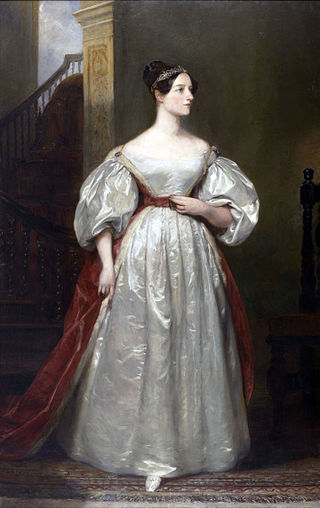
Portrait of Ada Lovelace is an 1836 portrait painting by the British artist Margaret Sarah Carpenter depicting the mathematician Ada Lovelace.














